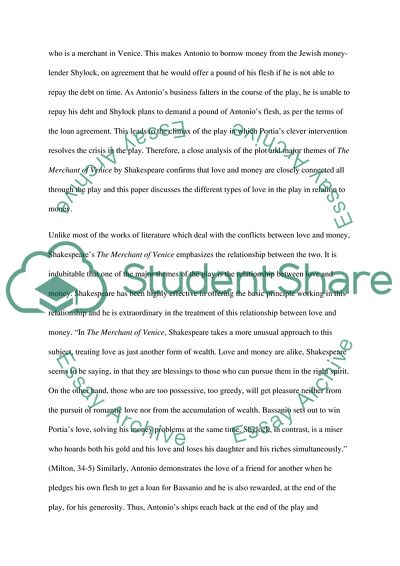Cite this document
(The Merchant of Venice by William Shakespeare - Relation between Love Book Report/Review, n.d.)
The Merchant of Venice by William Shakespeare - Relation between Love Book Report/Review. Retrieved from https://studentshare.org/literature/1730596-what-is-the-relation-between-love-and-money-in-the-merchant-of-venice-by-william-shakespeare
The Merchant of Venice by William Shakespeare - Relation between Love Book Report/Review. Retrieved from https://studentshare.org/literature/1730596-what-is-the-relation-between-love-and-money-in-the-merchant-of-venice-by-william-shakespeare
(The Merchant of Venice by William Shakespeare - Relation Between Love Book Report/Review)
The Merchant of Venice by William Shakespeare - Relation Between Love Book Report/Review. https://studentshare.org/literature/1730596-what-is-the-relation-between-love-and-money-in-the-merchant-of-venice-by-william-shakespeare.
The Merchant of Venice by William Shakespeare - Relation Between Love Book Report/Review. https://studentshare.org/literature/1730596-what-is-the-relation-between-love-and-money-in-the-merchant-of-venice-by-william-shakespeare.
“The Merchant of Venice by William Shakespeare - Relation Between Love Book Report/Review”. https://studentshare.org/literature/1730596-what-is-the-relation-between-love-and-money-in-the-merchant-of-venice-by-william-shakespeare.


